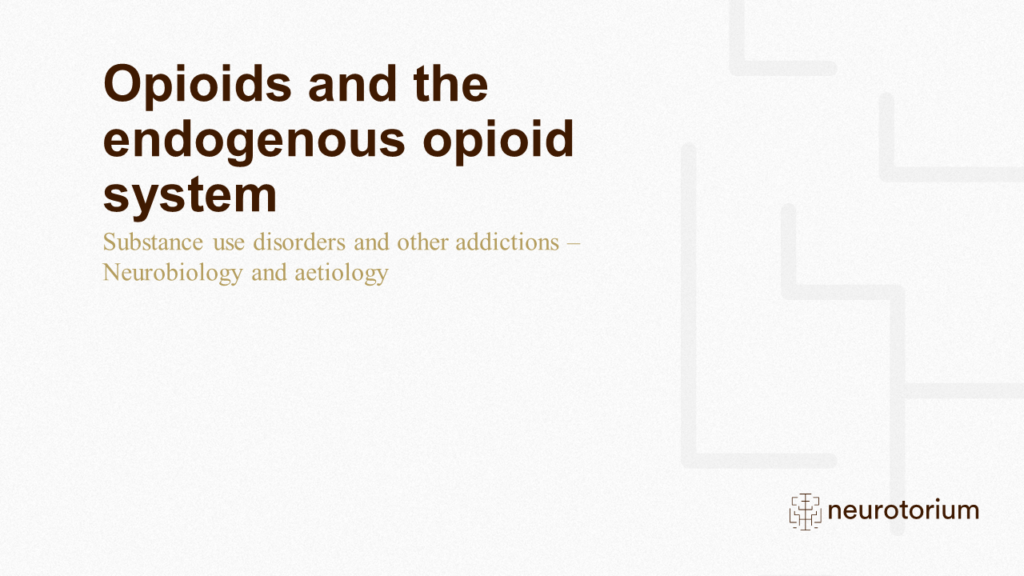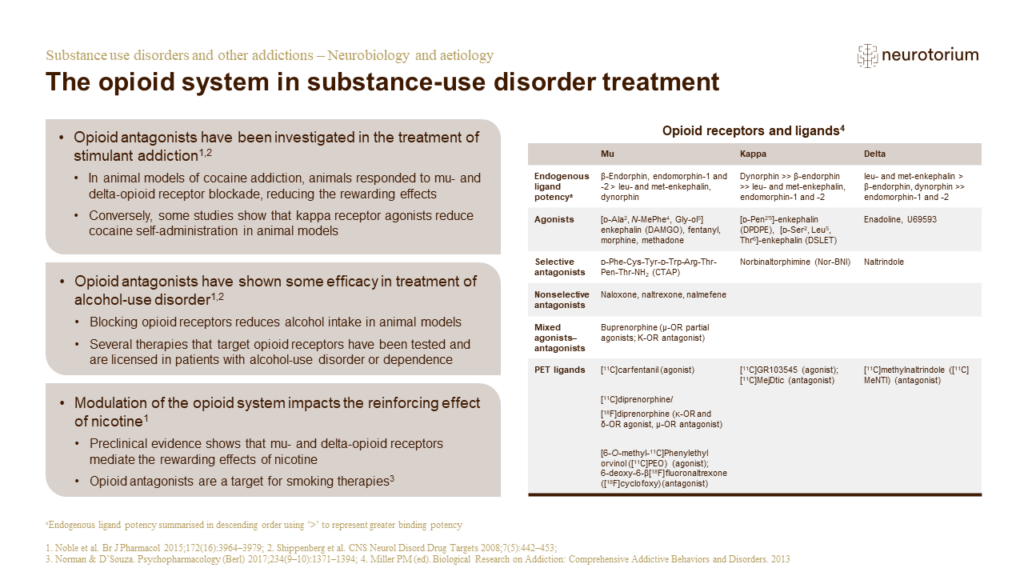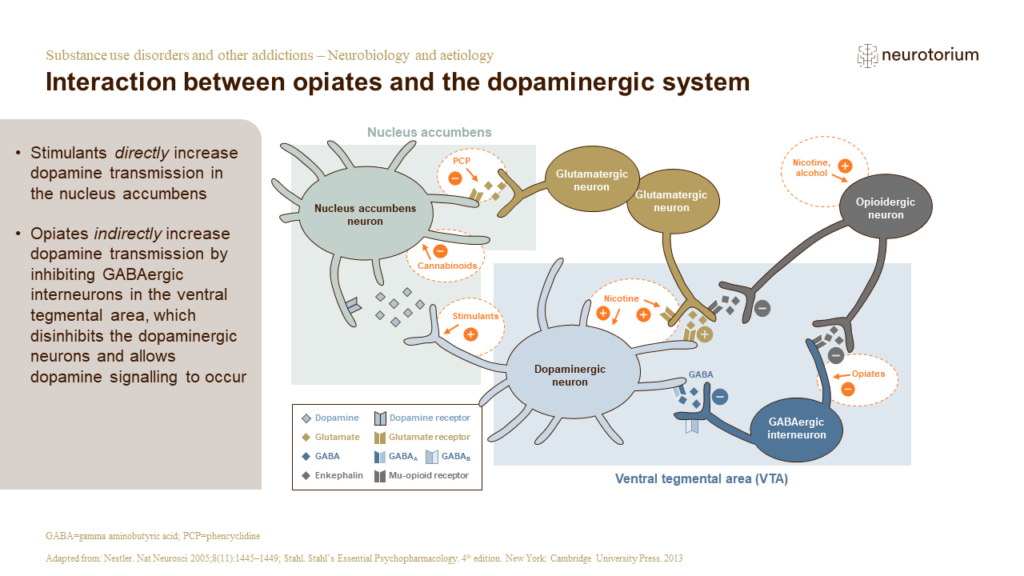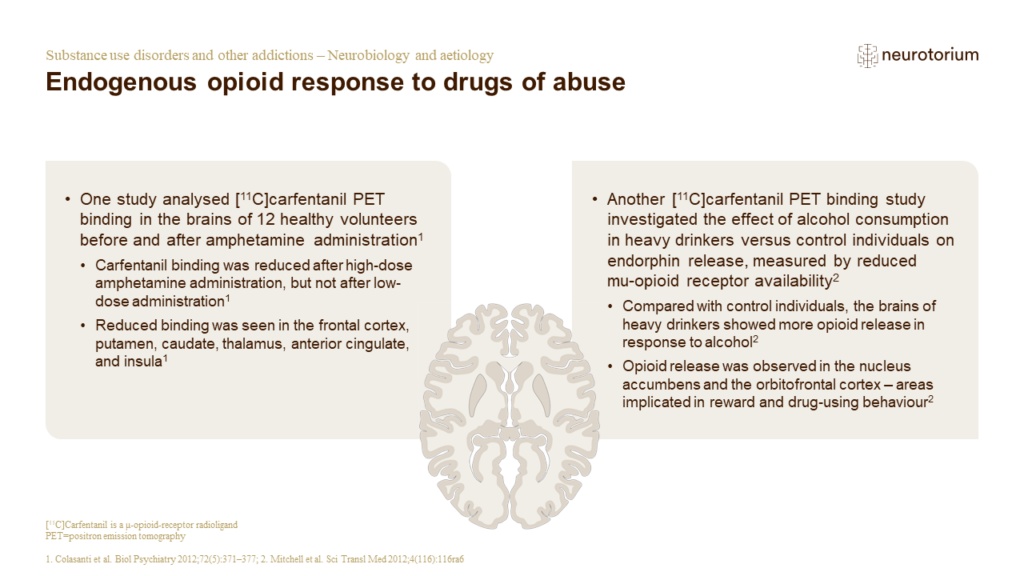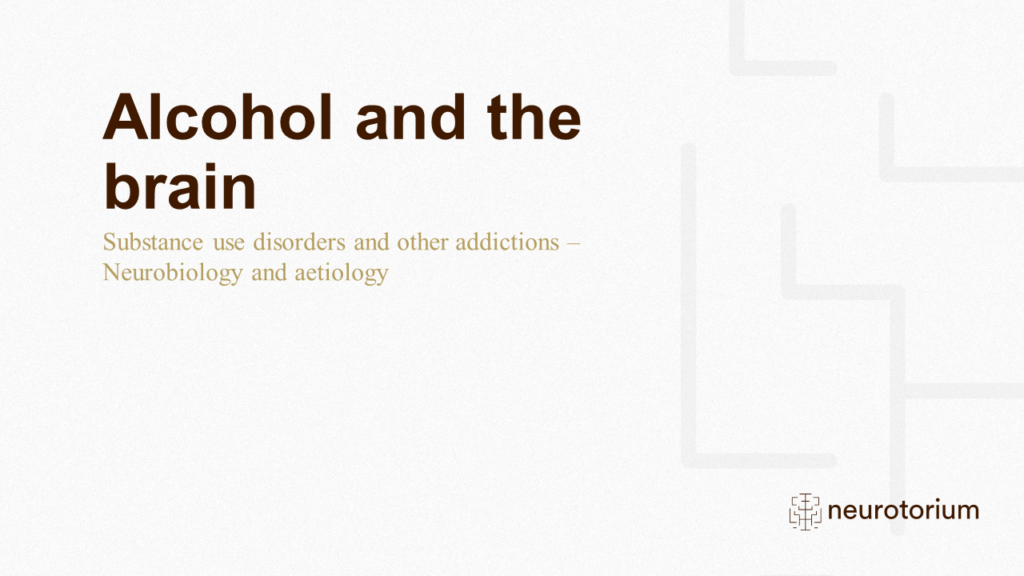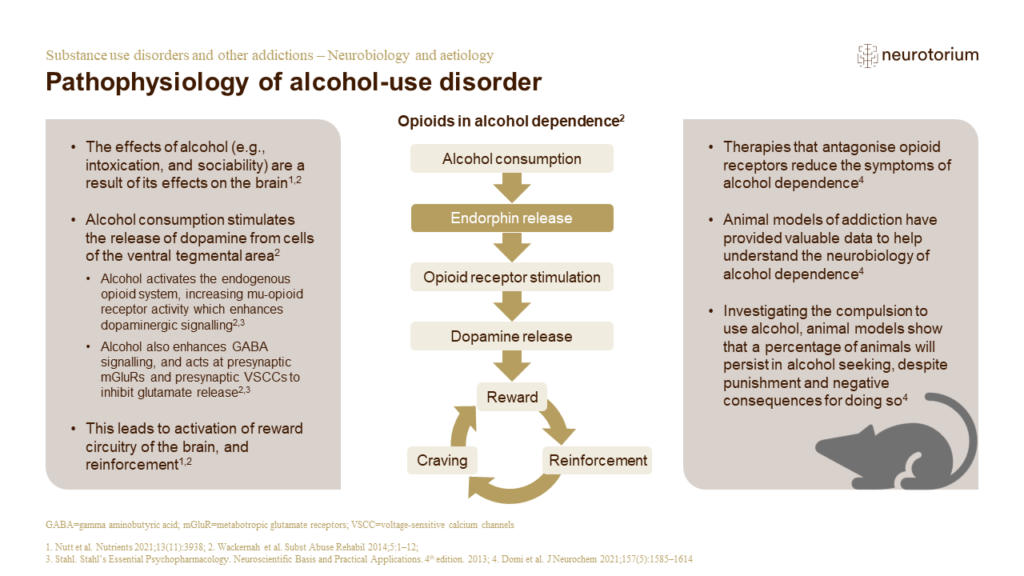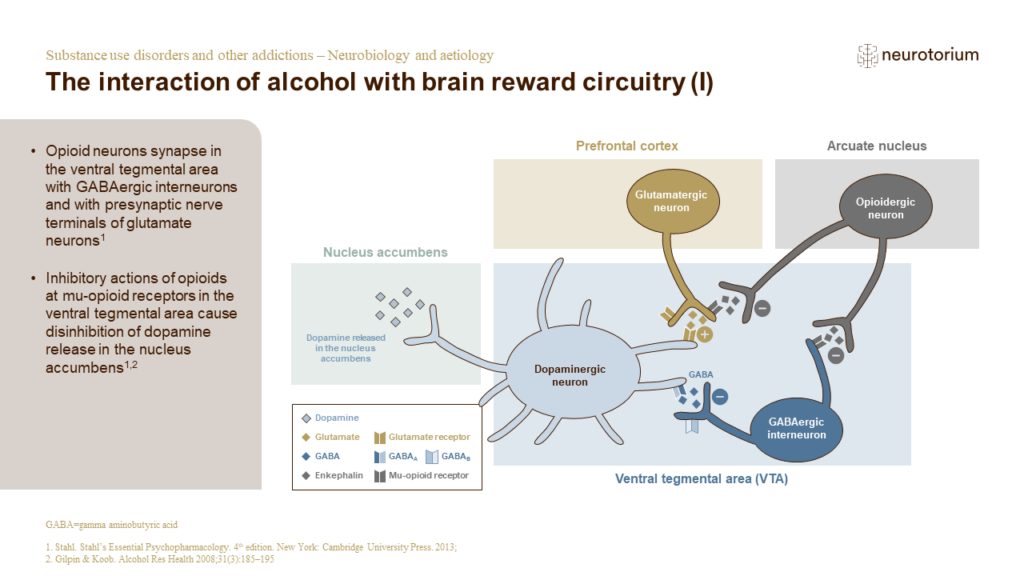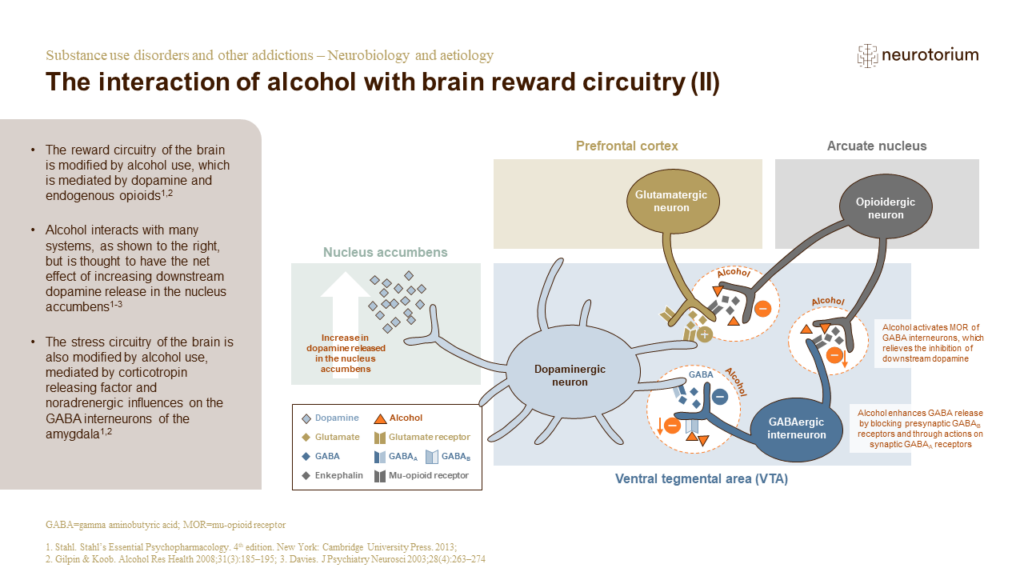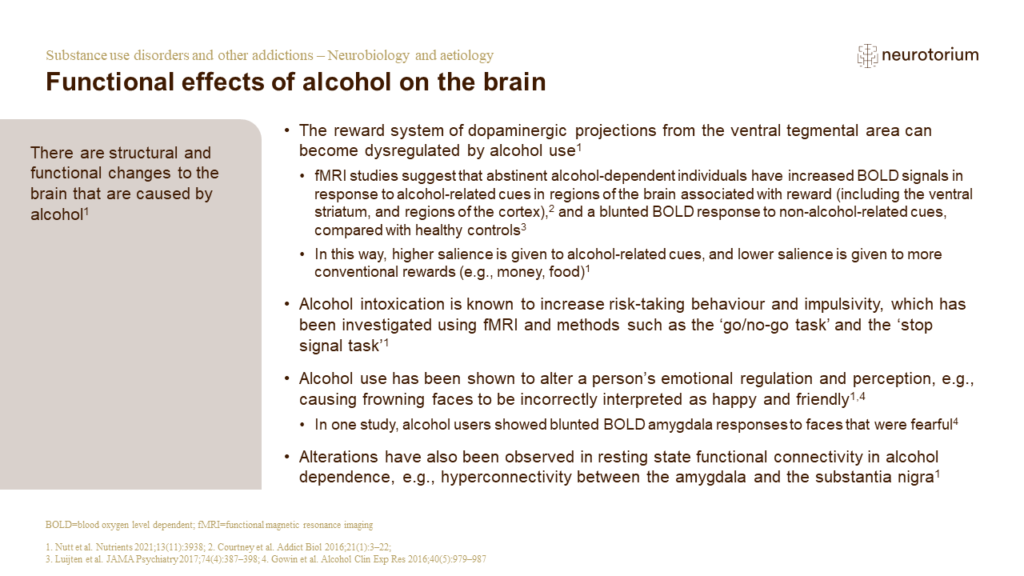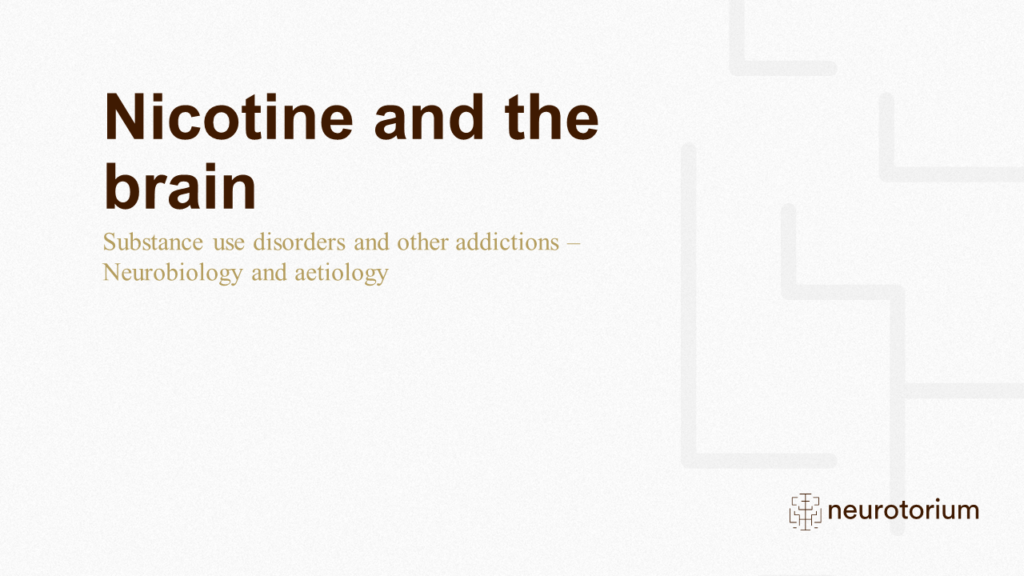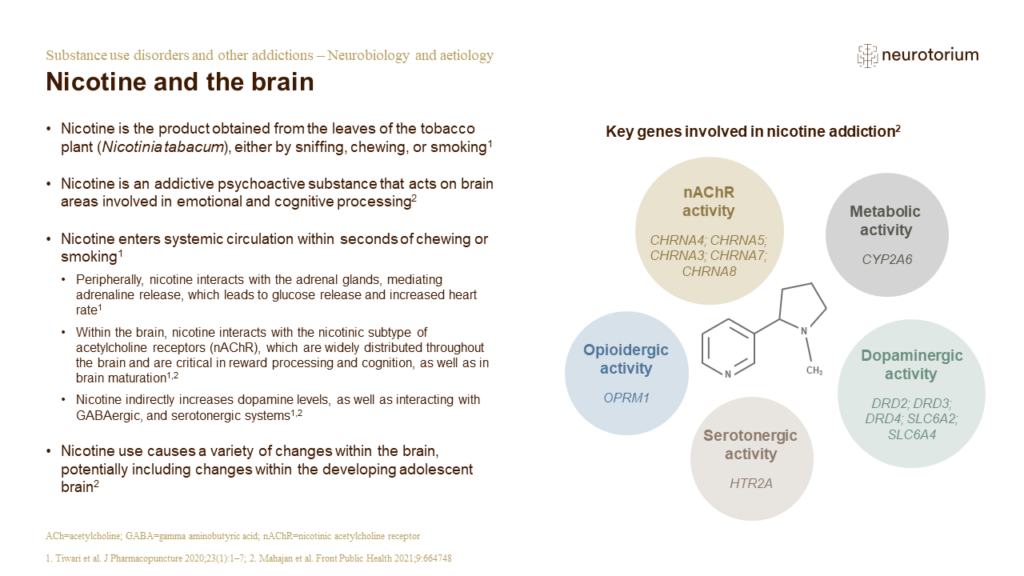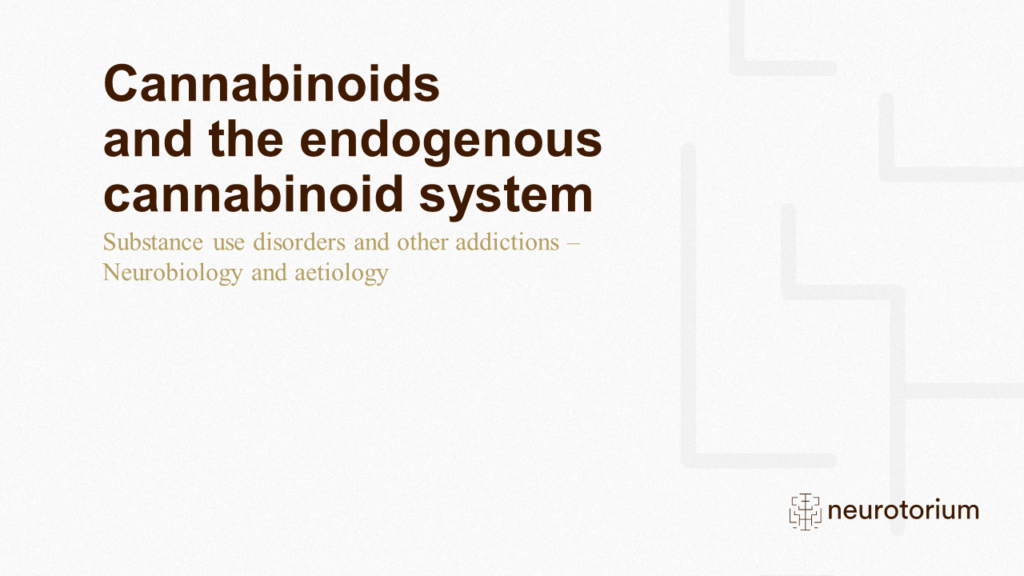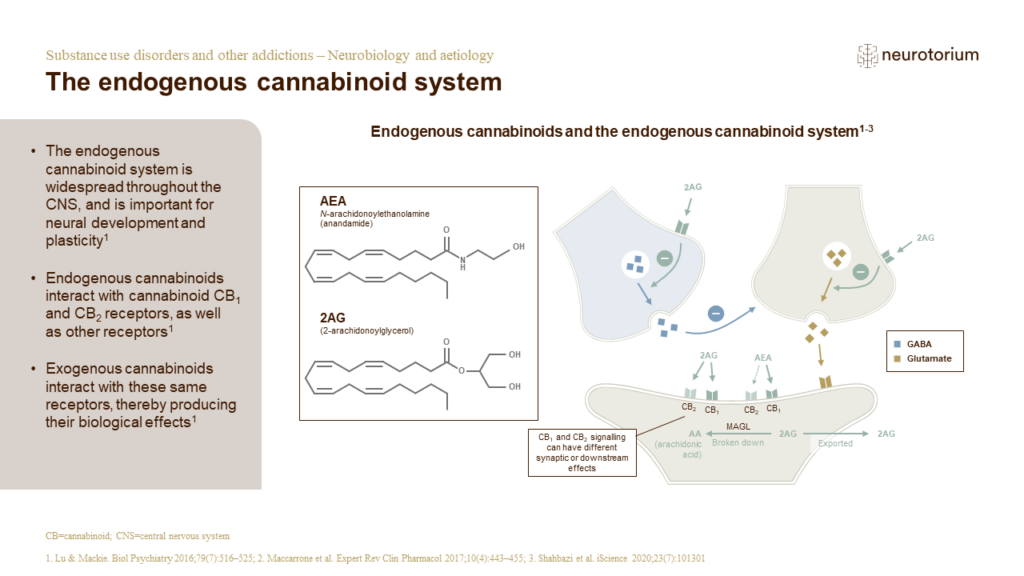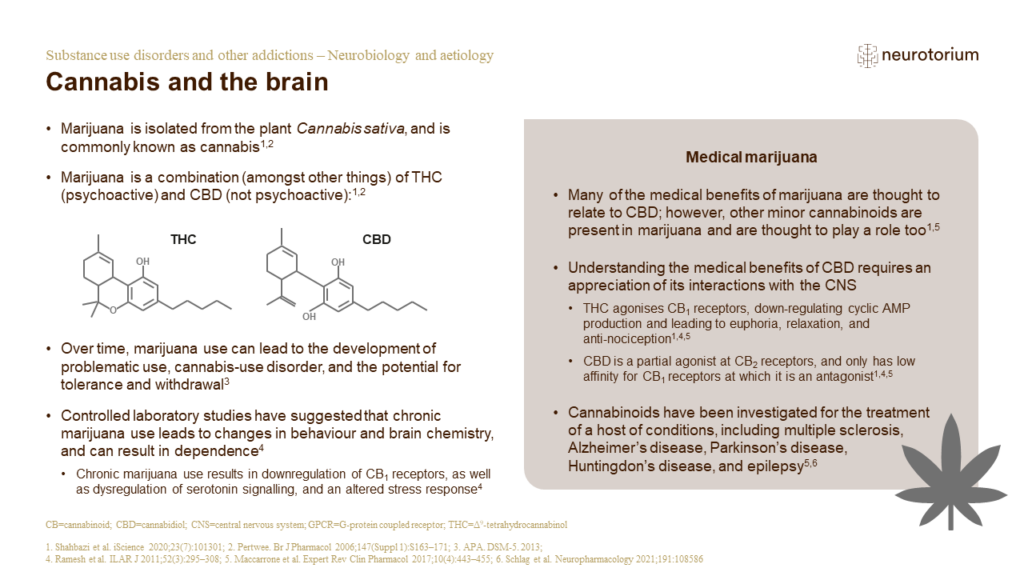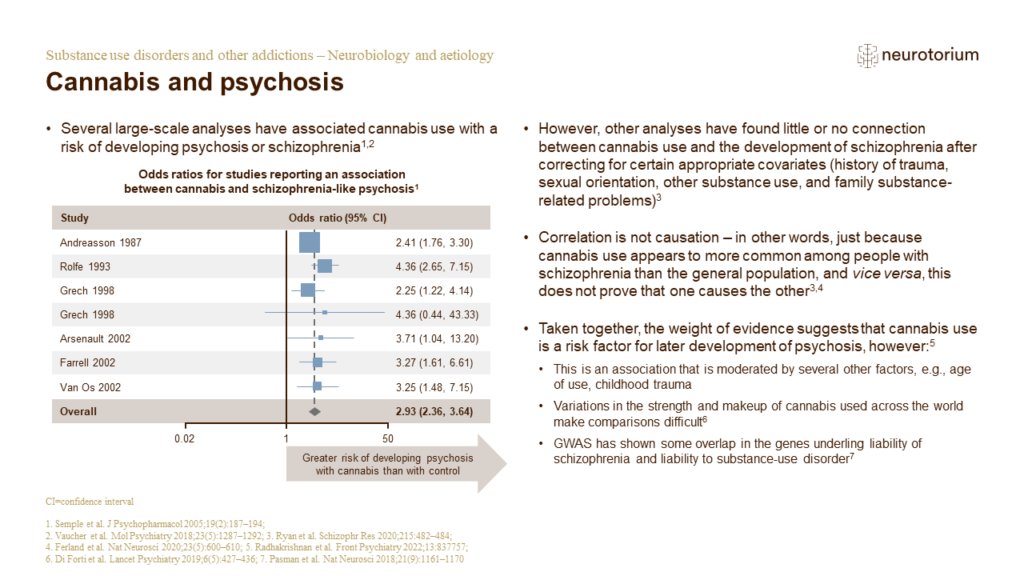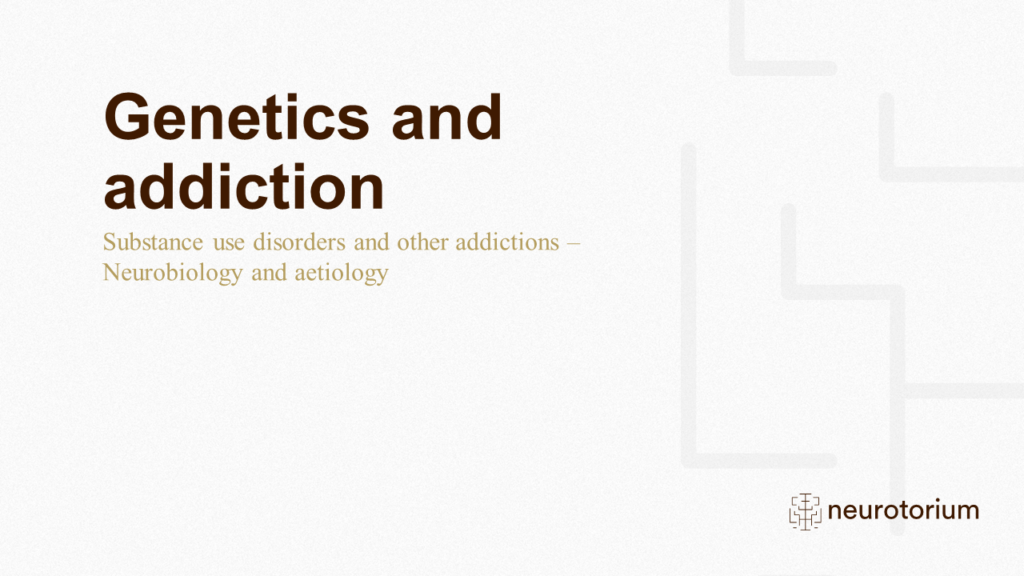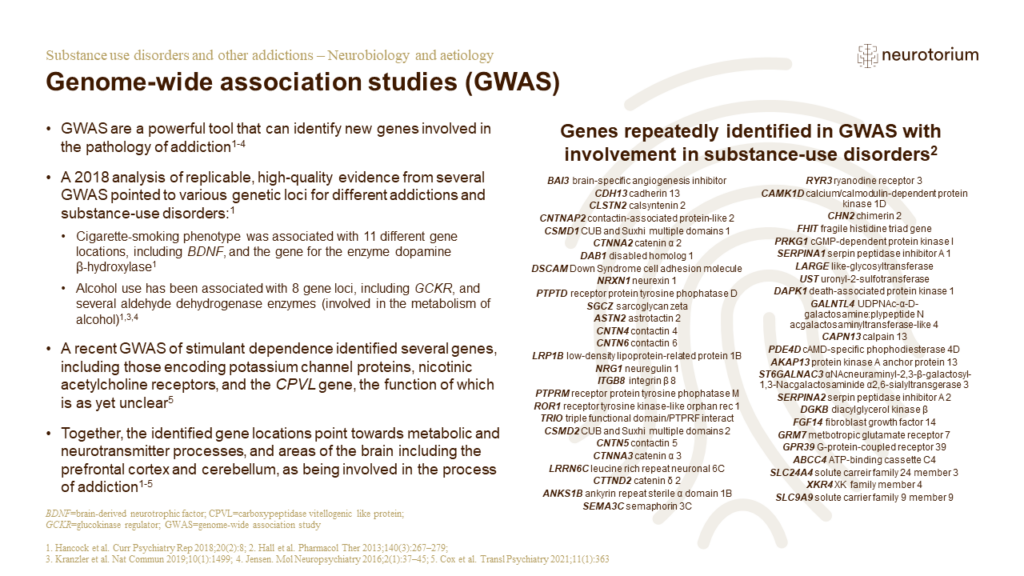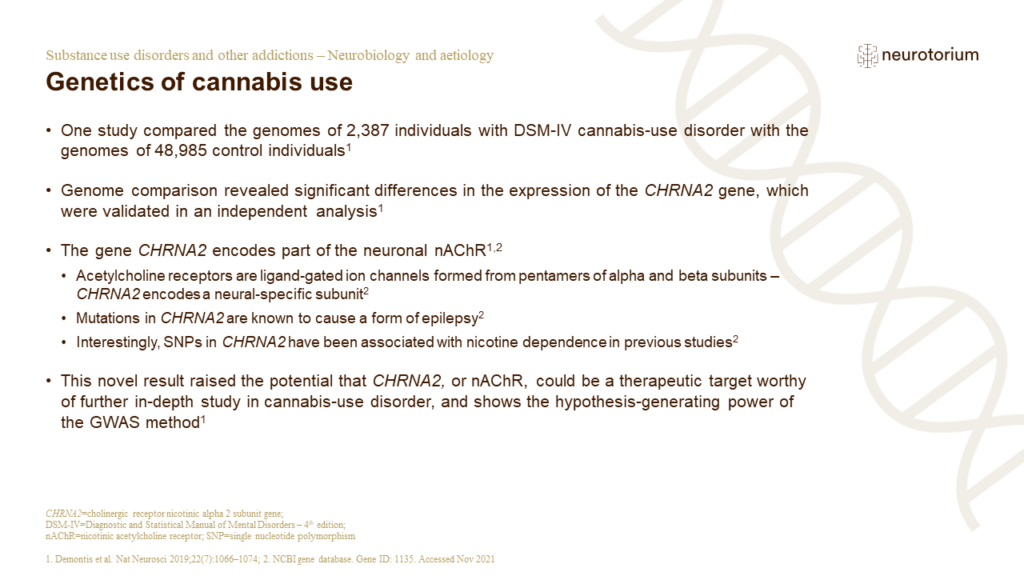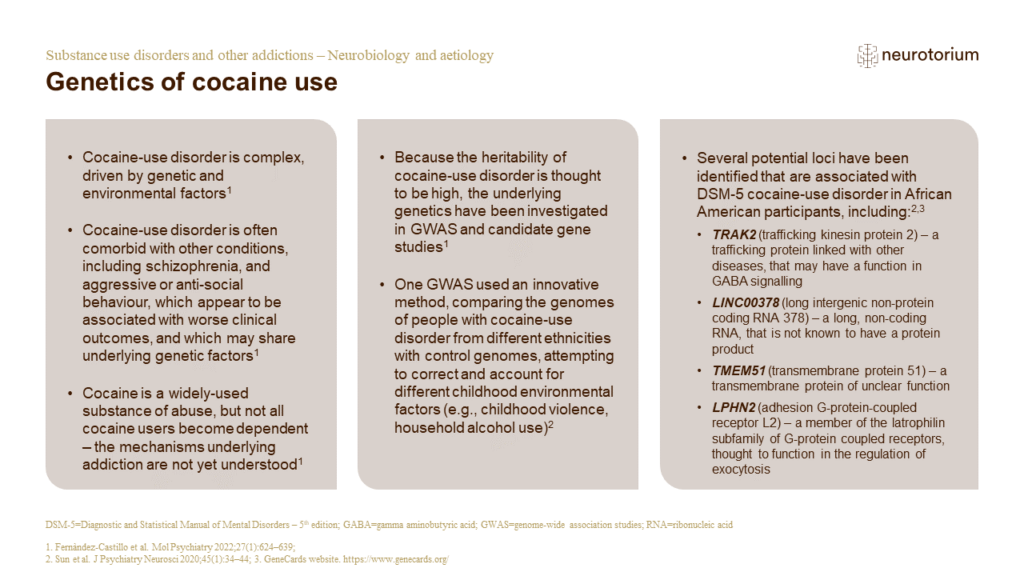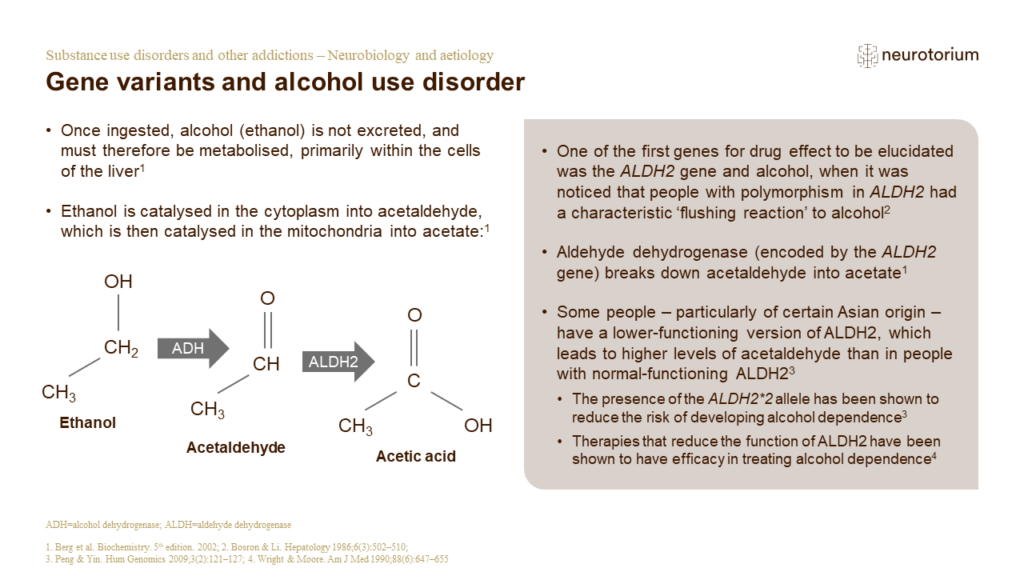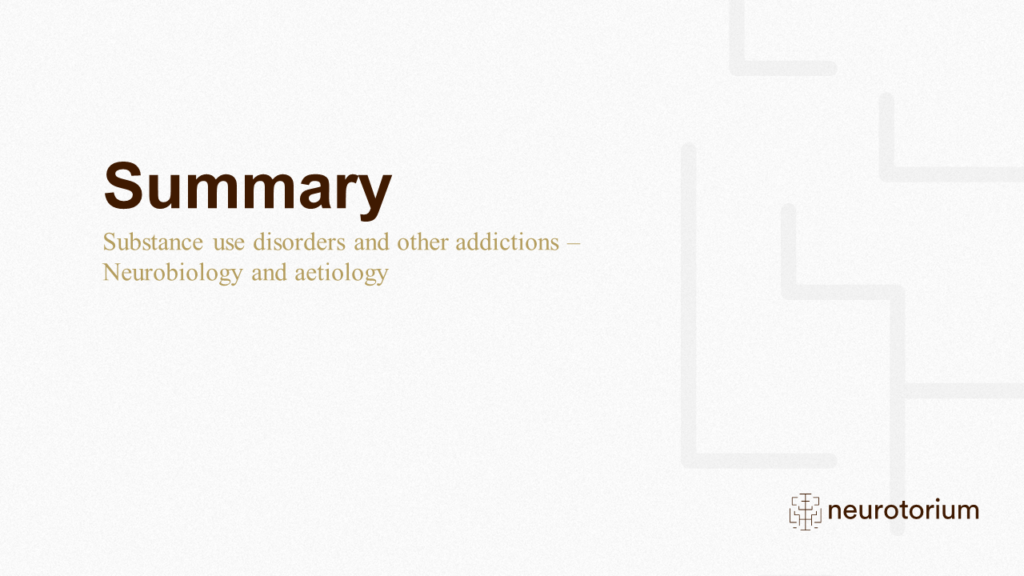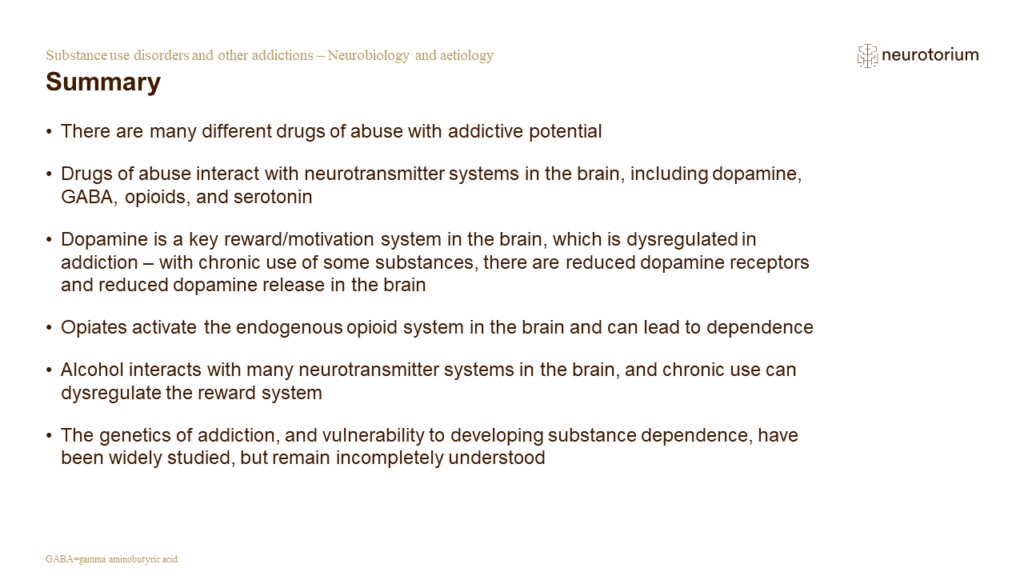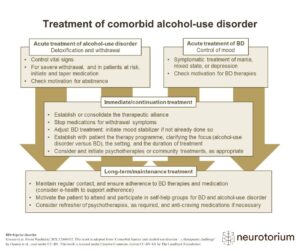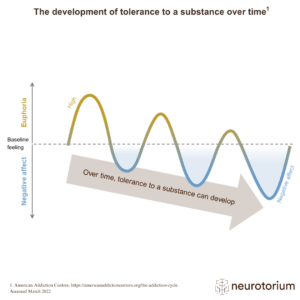Index for
slide deck
Presentation
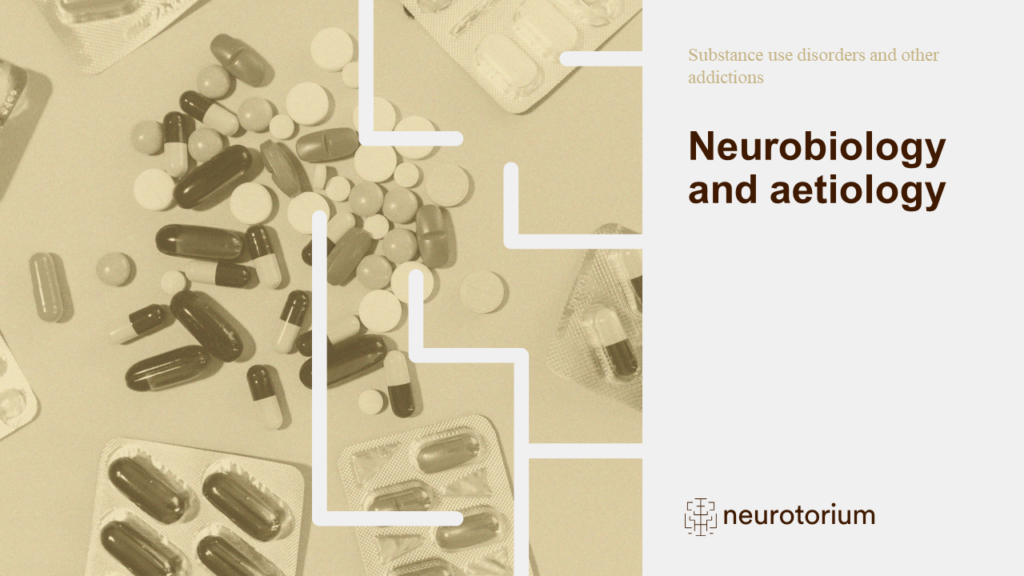
Neurobiology and aetiology
The past 50 years have seen many breakthroughs in the study of addiction, from neurobiology to the molecular identification of the targets of addiction. This slide deck discusses in detail the neurobiology and aetiology of Substance Use Disorders (SUD), with illustrations…
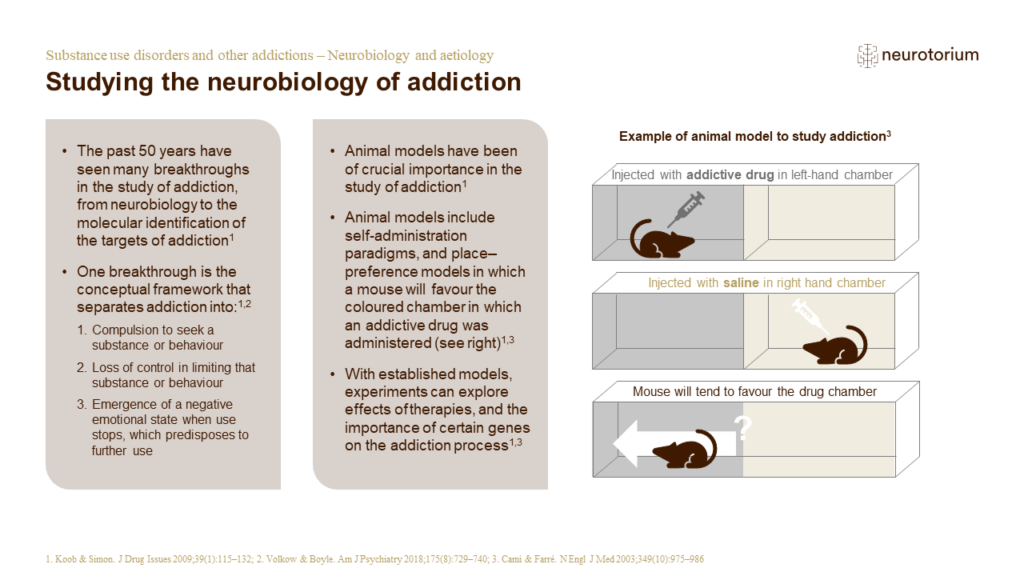
Studying the neurobiology of addiction
Whilst no animal model of addiction completely replicates the condition of a human brain during substance dependence, models provide a way of investigating components of the process of addiction.[1] Animal models of the rewarding effects of substances include self-adminis…
Neurochemistry and substance use disorder
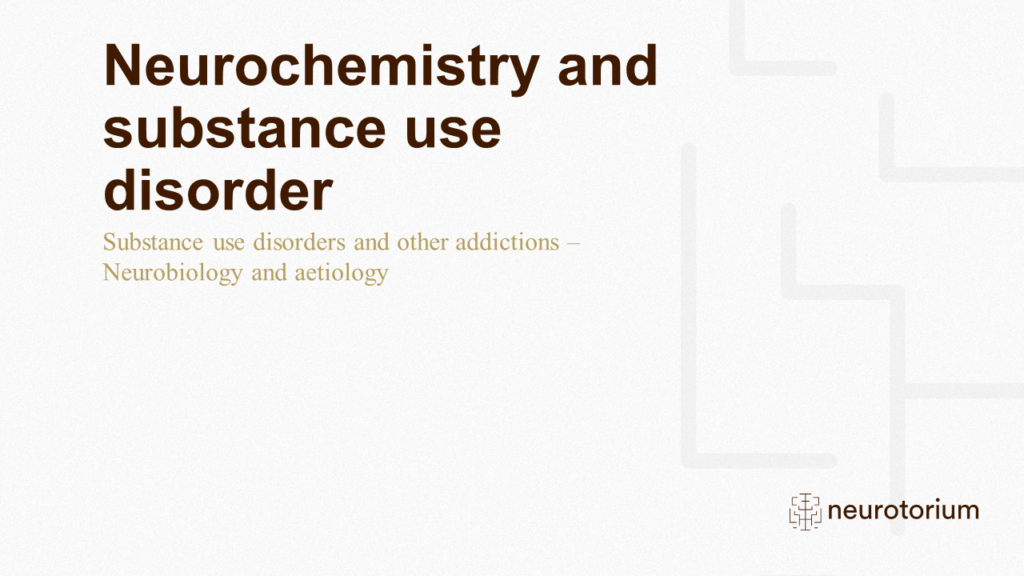
Neurochemistry and substance use disorder
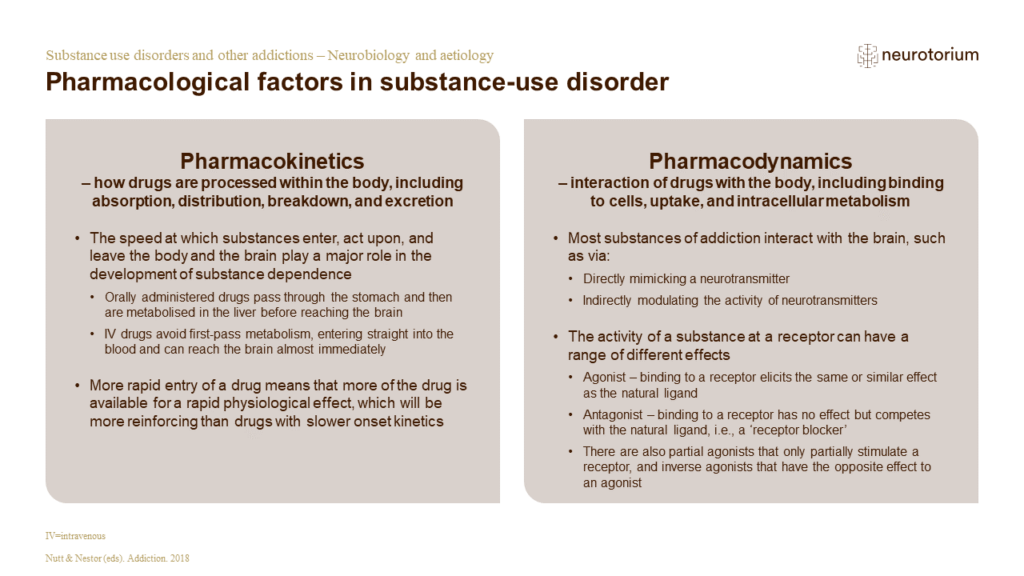
Pharmacological factors in substance-use disorder
When considering the addictive potential of substances of abuse, it is important to consider their pharmacokinetics and pharmacodynamics. Many addictive substances result in increases in dopamine in the brain, which drives reward, but the substance-induced increase can be…
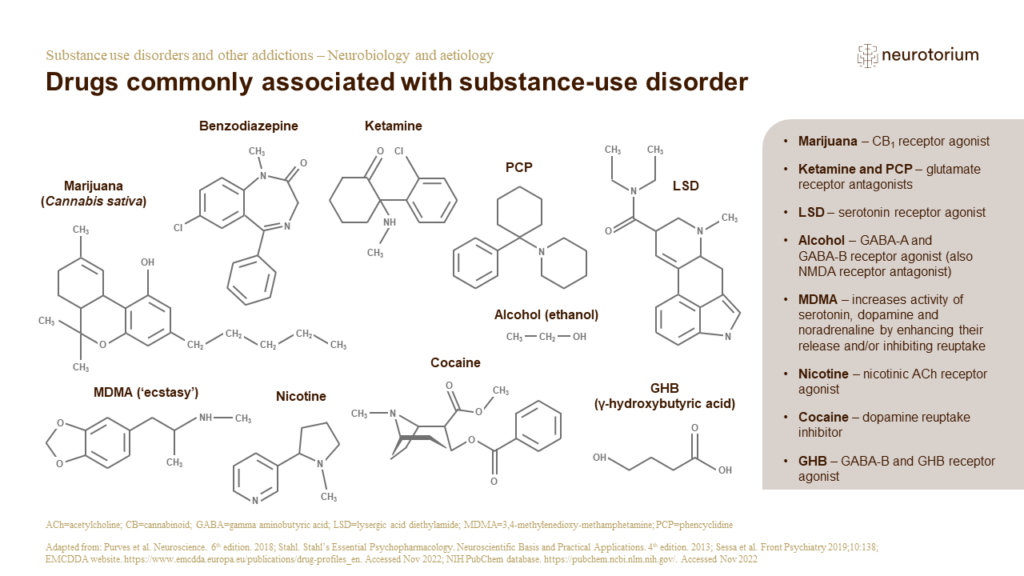
Drugs commonly associated with substance-use disorder
There are many drugs of abuse, with varying kinetics, and different interactions with neurotransmitter systems.[3,4,5] Some drugs of abuse have sedative effects (such as the GABA agonist alcohol, and opioids), whereas others have stimulating effects (such as the dopamine …
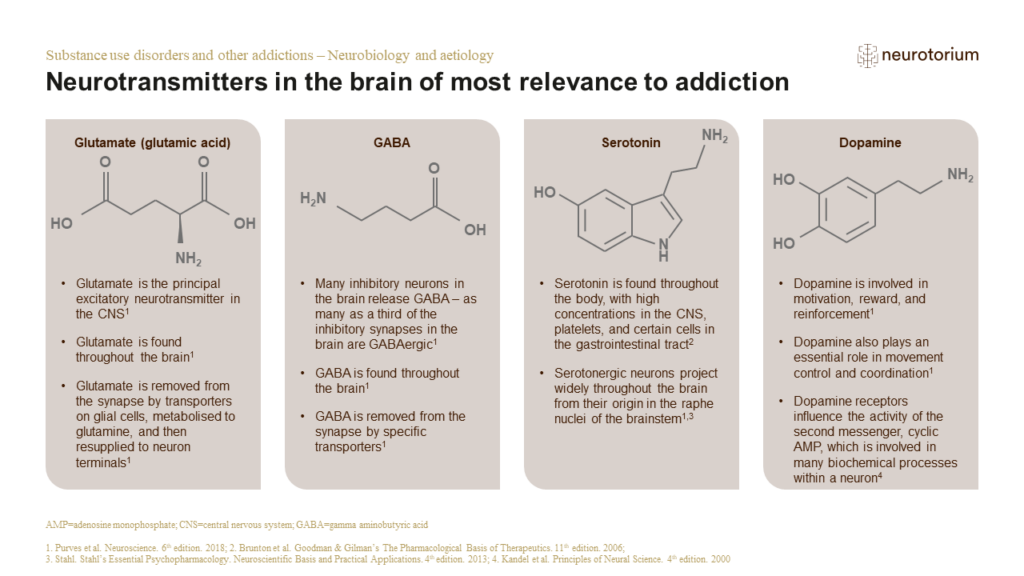
Neurotransmitters in the brain of most relevance to addiction
Many different neurotransmitters exist within the central nervous system (CNS), each binding to specific receptor types, which have distinct distributions and roles.[1,3,4] The variety of neurotransmitters within the CNS contributes to the functional complexity of the bra…
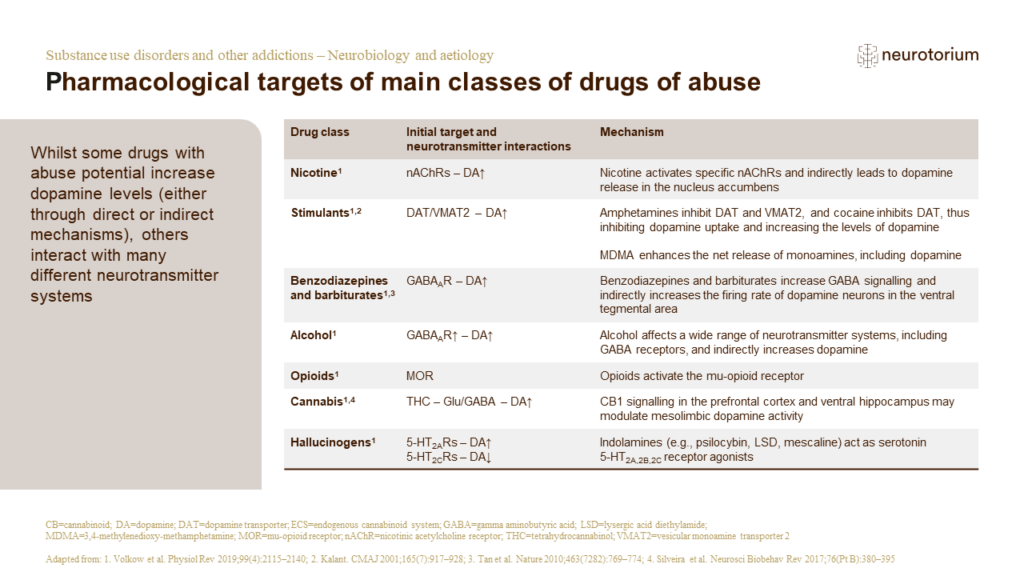
Pharmacological targets of main classes of drugs of abuse
As shown on the slide, some drugs with addictive potential increase the levels of dopamine in the brain.[1] However, many drugs of abuse engage with other neurotransmitter systems, including glutamate and GABA.[1] Whilst the importance of dopamine in addiction has been we…
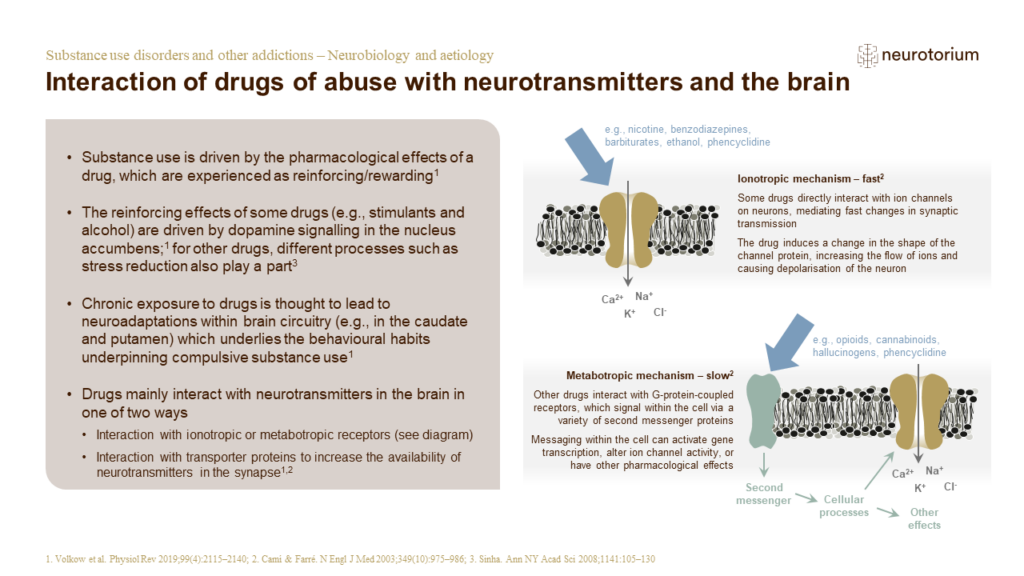
Interaction of drugs of abuse with neurotransmitters and the brain
Although the interaction between drugs of abuse and the neurochemistry of the brain is increasing understood, this interaction is mediated by a complex collection of genetic, epigenetic, developmental, and psychosocial factors.[1,2] For example, it is recognised that an e…
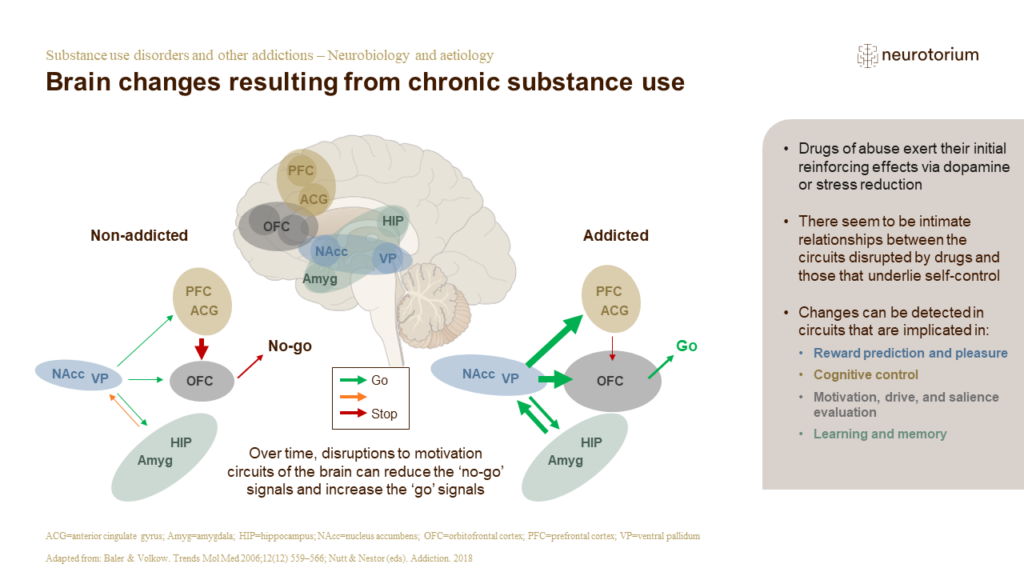
Brain changes resulting from chronic substance use
Many regions and circuits in the brain are involved in the control of motivation, which can be dysregulated by substance-use disorders and other addictions.[2] There are four key independent and overlapping circuits implicated in addiction, as shown on the slide, consisti…
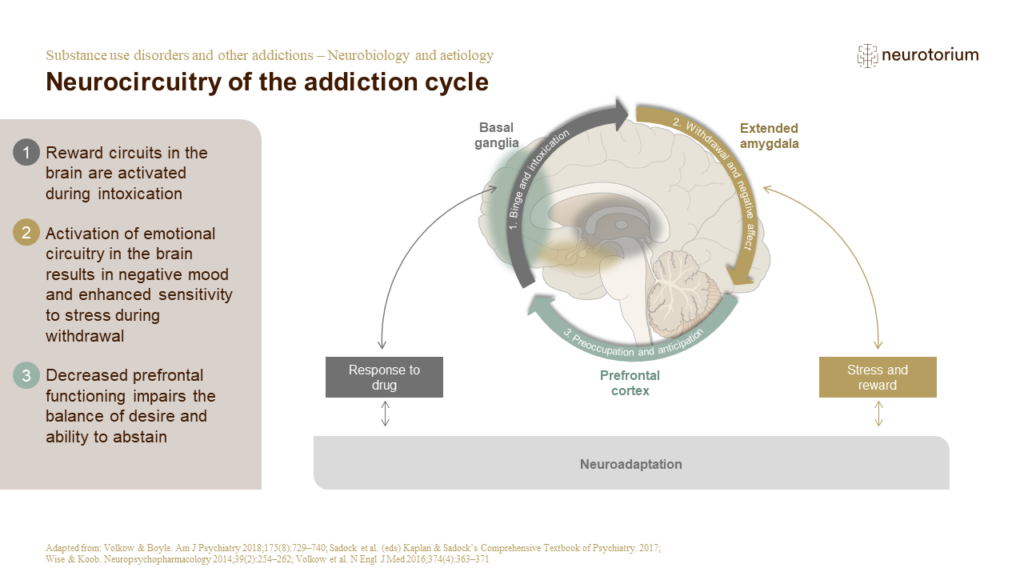
Neurocircuitry of the addiction cycle
The diagram on the slide illustrates the interaction between neurocircuitry and behaviour of addiction, divided into binge/intoxication, withdrawal/negative affect, and preoccupation/anticipation, each of which is associated with the activation of certain neurological pat…
The dopamine system and addiction
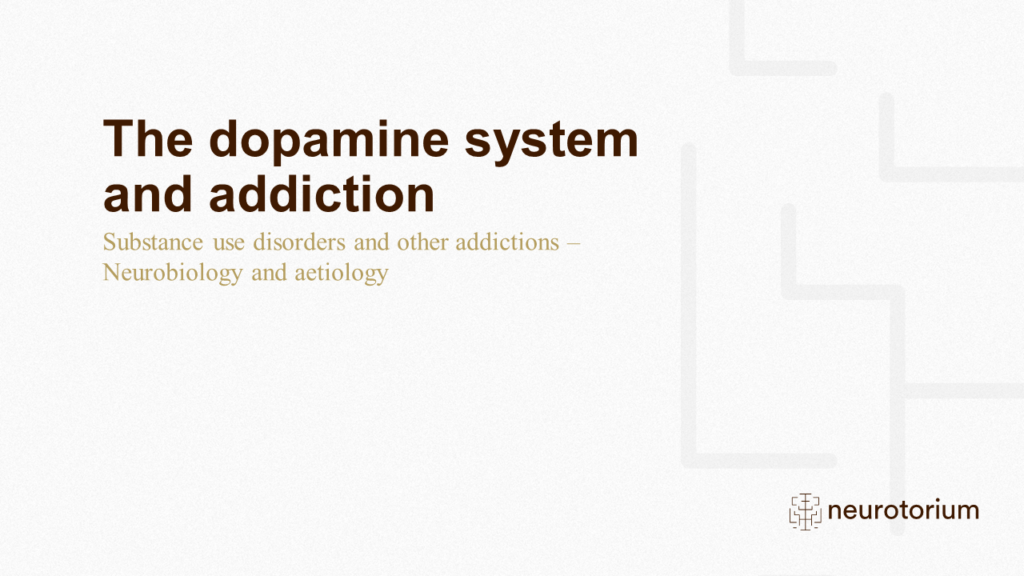
The dopamine system and addiction
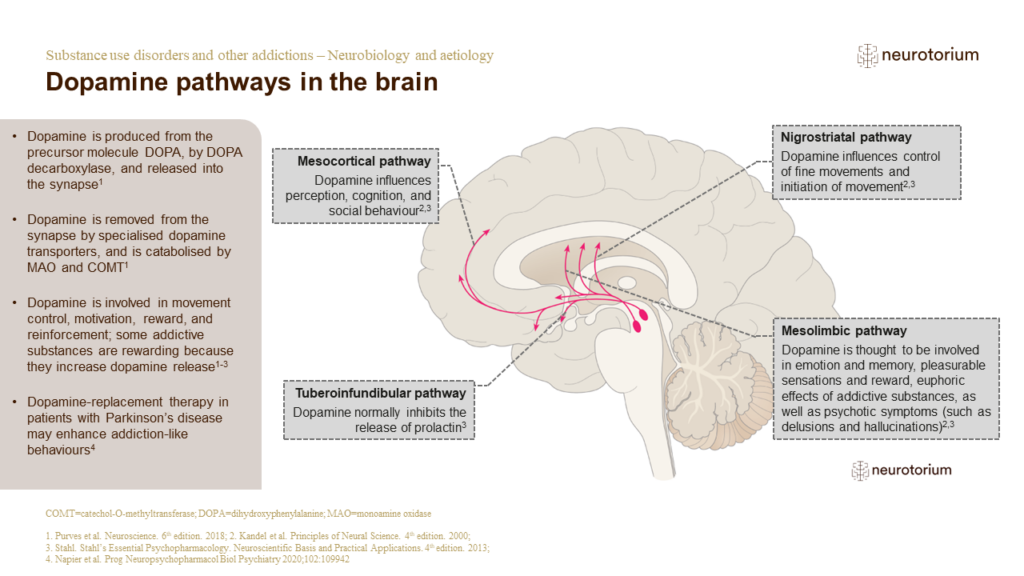
Dopamine pathways in the brain
Dopamine receptors influence the activity of the second messenger, cyclic AMP, which is involved in many biochemical processes within a neuron.[2] Dopamine receptor subtypes D1 and D5 increase levels of cyclic AMP, whereas D2, D3, and D4 subtypes decrease levels of cyclic…
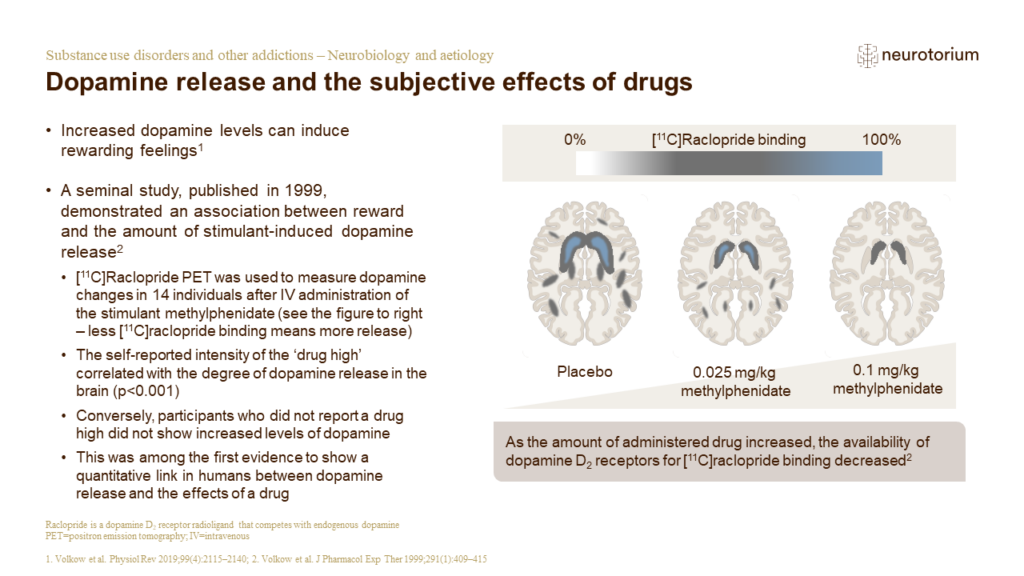
Dopamine release and the subjective effects of drugs
Drugs of abuse modulate the dopamine system.[1,2] The study detailed on the slide provided ground-breaking evidence of a relationship between increased dopamine in the brain and the feeling of ‘drug high’ in response to a stimulant.[2]
References:
[1] Volkow ND, Michaelid…
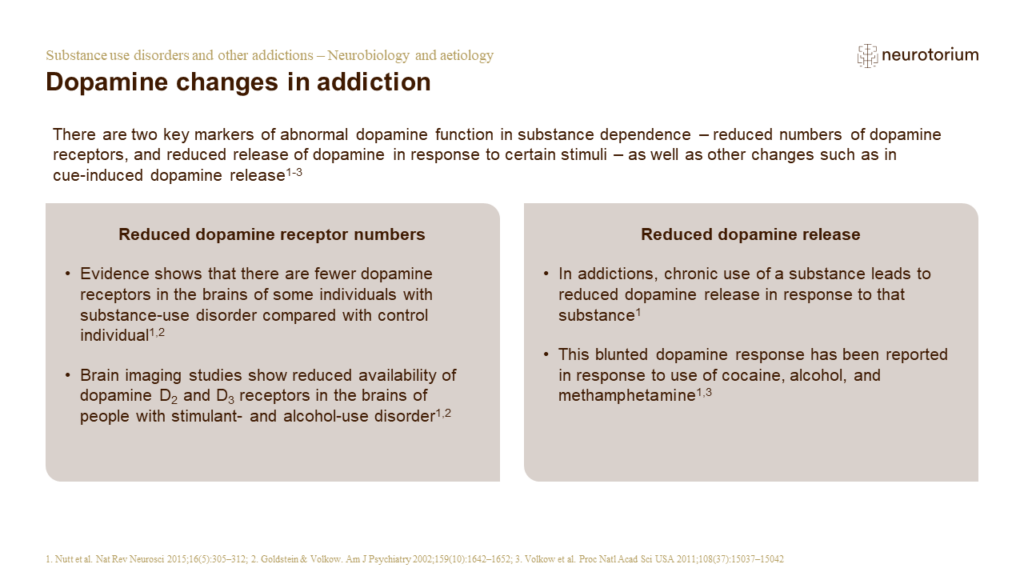
Dopamine changes in addiction
There is something of a paradox relating to the role of dopamine in addiction. Individuals with low levels of striatal dopamine receptors reported greater pleasurable effects from stimulant use than those with normal levels.[1] However, the first of the markers of abnorma…
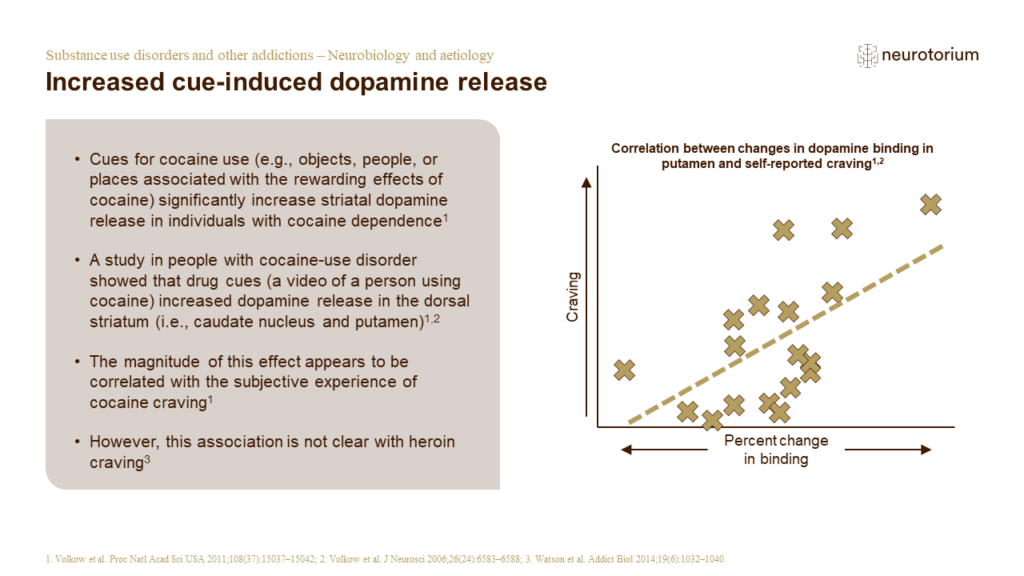
Increased cue-induced dopamine release
In the study described on the slide, videos of either neutral content or cocaine-use cues were shown to 18 people with cocaine-use disorder, and changes in dopamine binding in the brain were analysed using [11C]raclopride PET.[2] Raclopride binding was reduced in the dors…
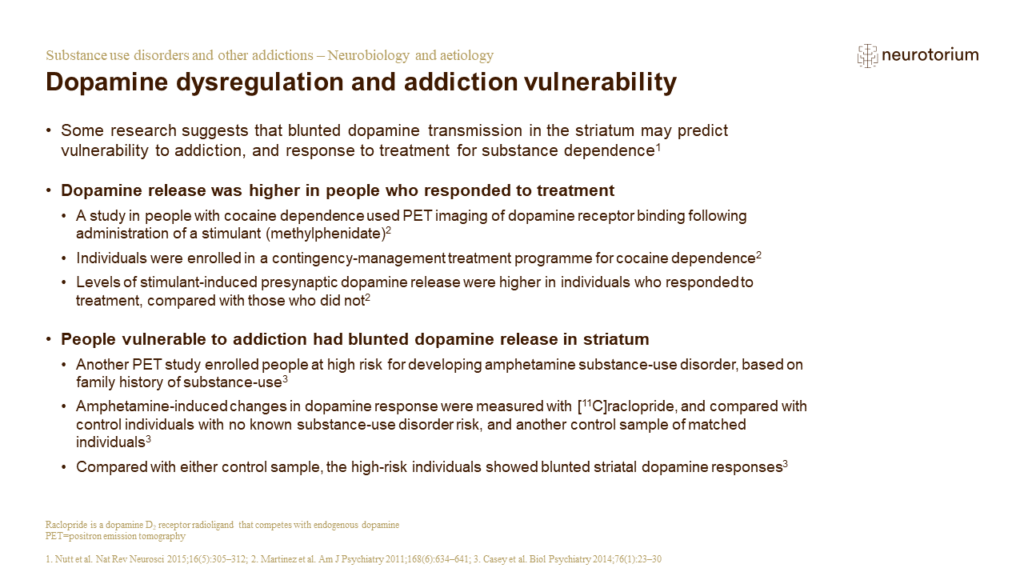
Dopamine dysregulation and addiction vulnerability
This slide describes some of the evidence of the importance of dopamine in predicting the development and course of addiction.[2,3] However, these experiments hint at the complexity of studying addiction; do low levels of dopamine predict vulnerability, or did the high-ri…
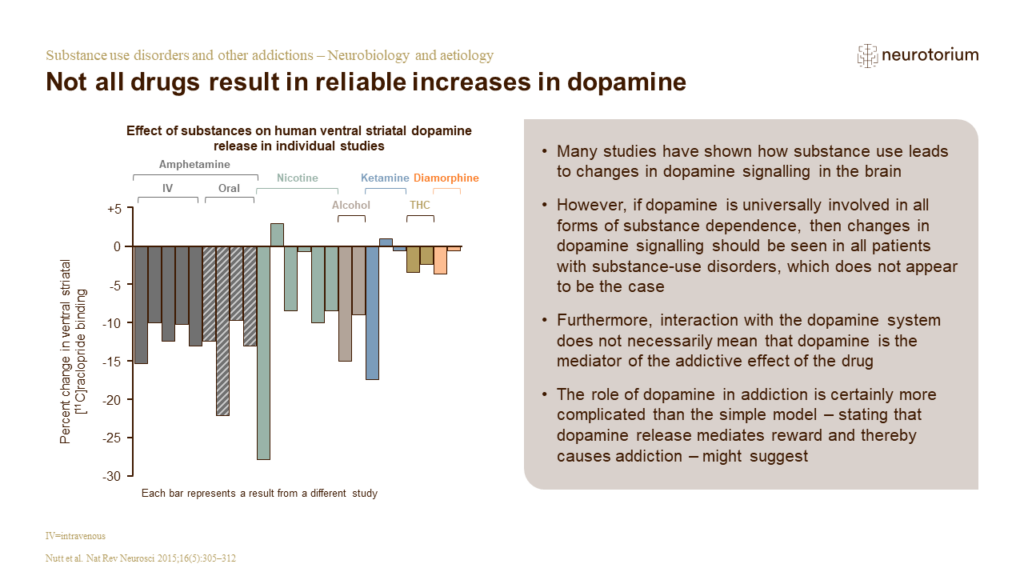
Not all drugs result in reliable increases in dopamine
Neuroimaging studies have furthered the understanding of addiction and the role of dopamine in substance use and dependence.[1] However, the conclusions from such studies are limited by the constraints of technology.[1] For example, many available radiotracers cannot dist…


